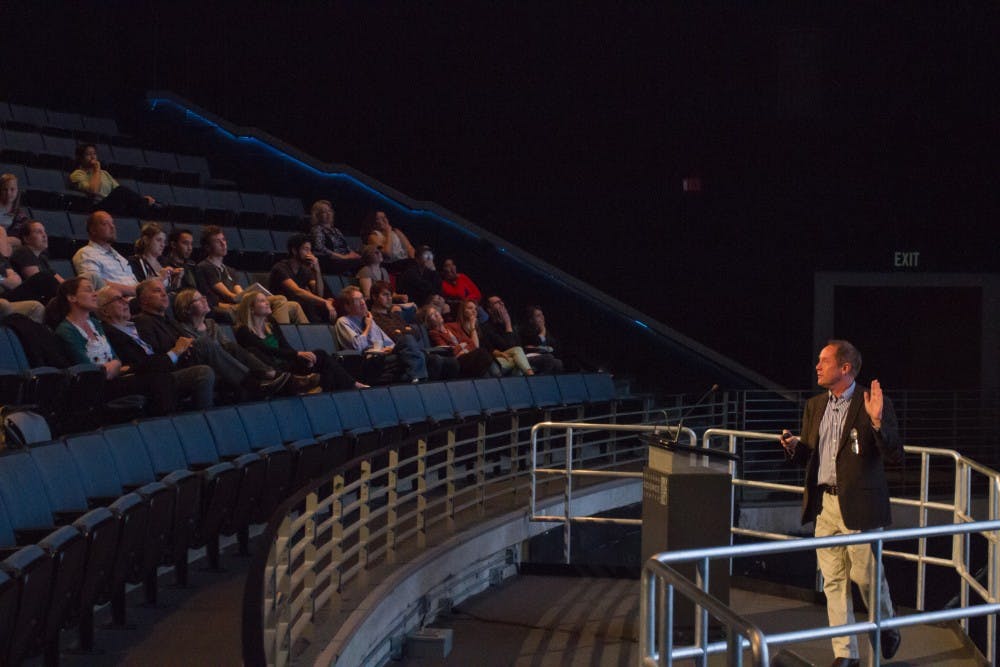Saving one endangered species over another may come down to math.
Hugh Possingham, chief scientist of The Nature Conservancy, spoke to ASU students and staff on Monday at the Arizona Science Center in Phoenix about his experiences with mathematics and how efficiently allocated funds can be used to benefit nature conservancy.
“I have translated human’s hopes, dreams and fears into algebra,” said Possingham. “If you want to go do something, go save a plant … or you can make up a formula and save 250 species.”
Possingham said there is a finite amount of time, money and recourses that play a factor in choosing which endangered species receives needed funds.
“Everyone has allocation problems … you can never avoid prioritizing things,” he said.
Possingham said one of his systematic designs for conservation planning is to “build a compact and connected system of protected areas that equitably represent all habitats and species while annoying as few other people as possible.”
Possingham said prioritizing which species to focus on saving isn't necessarily a negative thing.
“When I talk about this people say, ‘oh, you’re letting species go, this is triage, you’re giving up on species.’ In a sense it’s not triage, all we can do as environmental scientists and mathematicians is give (governments) a list,” he said. “We don’t triage, we prioritize.”
Possingham said his philosophy is to use math to help conservation efforts of endangered species.
“In conservation, it’s relatively recent that we’ve started to use math. In some cases, people are still a little suspicious of math,” he said, “But let’s face it, who runs the planet? It’s mathematicians.”
“The most important aspect (of my work) is delivering better outcomes for less dollars. It’s all about efficiency and cost effectiveness,” he said.
As chief scientist of The Nature Conservancy, the world’s largest nongovernmental environmental organization, Possingham said he has worked all over the world using applied mathematics to economics to solve conservation problems.
Possingham said he constructed formulas based on various factors to rank each species to see what funds could be allocated and where.
Possingham said in 1996, he used his formula of "building a compact and connected system" to evaluate the mapping out of suitable fishing areas on the Great Barrier Reef off the coast of Australia while protecting marine wildlife and allowing fishermen to make a living.
“To be honest, in conservation, when people say, ‘how much of The Great Barrier Reef should and shouldn’t we protect,’ I say there is only one answer: More is better, less is worse for nature,” Possingham said.
ASU professor Leah Gerber, who is also the director of the Center for Biodiversity Outcomes at the ASU Wrigley Institute, said it is important to be transparent about which species are prioritized.
“I would argue that math is a way to clarify what the choices are," she said after the event. "We could maybe achieve slowing the rate of extinction of one species, but with the same amount (of funds) we may be able to recover 50 other species. I think math offers a way to be transparent about the choices we are making.”
Douglas Lawton, an ASU graduate student who attended the speech said finances may get in the way of saving every species.
“The public’s opinion is, ‘let’s save everything,’ but obviously, we can’t because we have a constrained budget. It makes more sense to try to rank (species) in some way.”
Possingham said his efforts focus on maximizing the effects of conservation and preservation of a species or group of species with the allocations provided.
“Our long-term goal is to save the planet,” Possingham said.
Reach the reporter nfish2@asu.edu or follow @gofishgetgone on Twitter.
Like The State Press on Facebook and follow @statepress on Twitter.




